From the R365 App, users can create, review, and submit both single-vendor and multi-vendor purchase orders. This allows users to create and enter purchase orders from anywhere in the restaurant on their mobile device.
When creating an order, users with the appropriate purchase order Permissions can elect to manually create a new order or utilize a template or shopping list.
To read more about the web version of ordering, click here.
Creating a Single-Vendor Purchase Order
Users can create new single-vendor purchase orders manually or by using a template. Order Templates must be created in the web version of R365. :earn more about creating an order template.
To create a single-vendor purchase order, follow these steps:
Click steps to expand for additional information and images.
1) Navigate to the Orders screen and tap the Create button.
Select More from the bottom tab bar.
Select Orders.
Tap the Create button.

2) Tap the Location field to select the location for the purchase order.
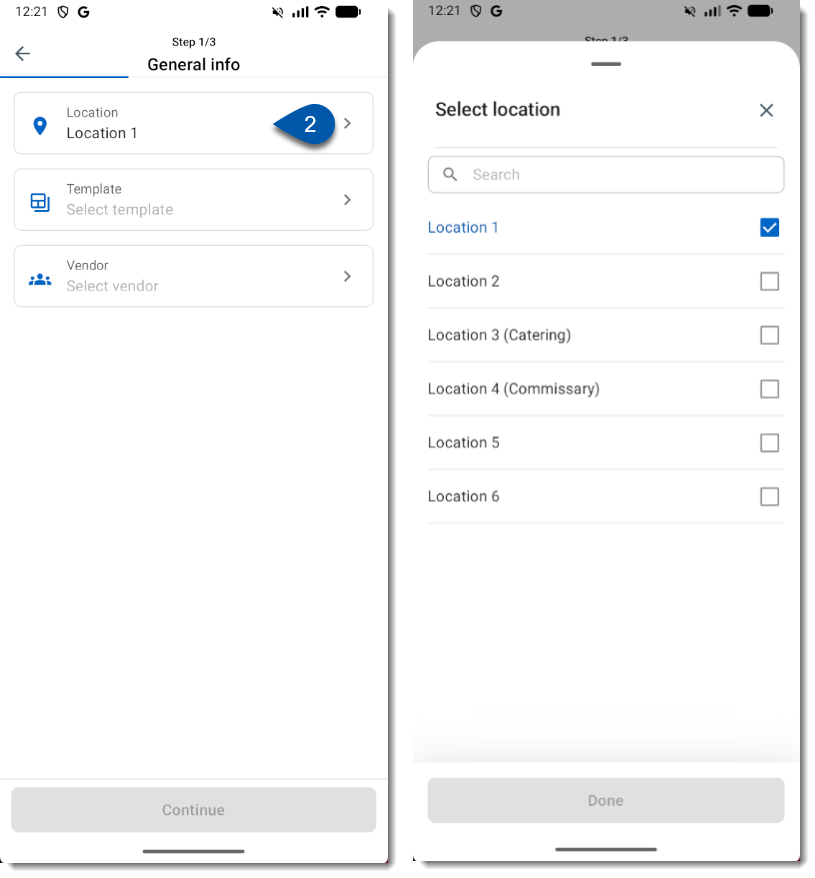
3) If using a template for the order, tap the Template field to make a selection. To create a purchase order without using a template, users should tap and select a Vendor.
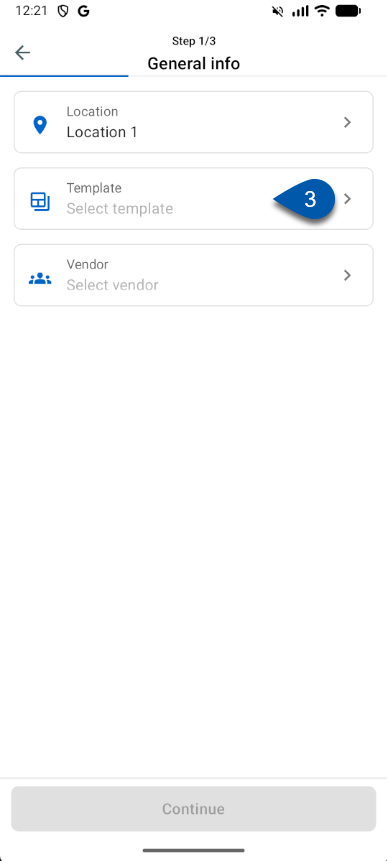
4) Select a template to create a single-vendor order.
Only the templates assigned to the selected location will be available for selection.
Users that have the 'Require a Template when creating Purchase Orders' permission must select a template in order to continue to the next step.
Tap a template to select.
Tap the Use order template button to continue with the selected template.
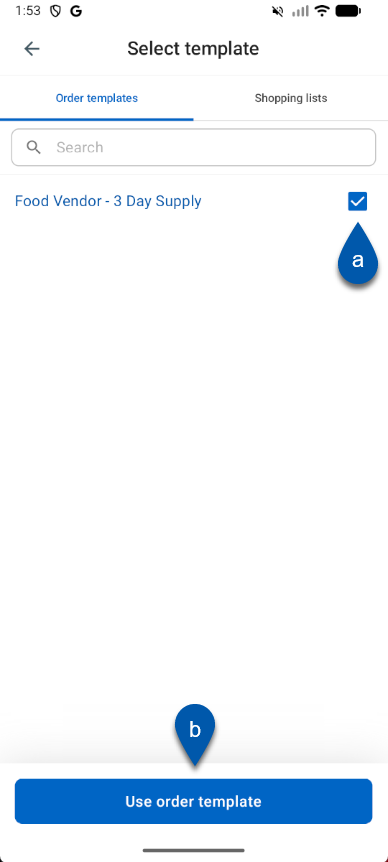
Shopping Lists create multi-vendor orders. Read about creating a multi-vendor order below.
5) Once a template or vendor has been selected, review the information and edit as necessary.
The following editable fields will appear on screen:
Vendor
Delivery Address
Order Date
Delivery Date
Notes

Tapping the vendor email icon
will show the email address where the purchase order will be sent.
6) Once the information is correct, tap Continue.
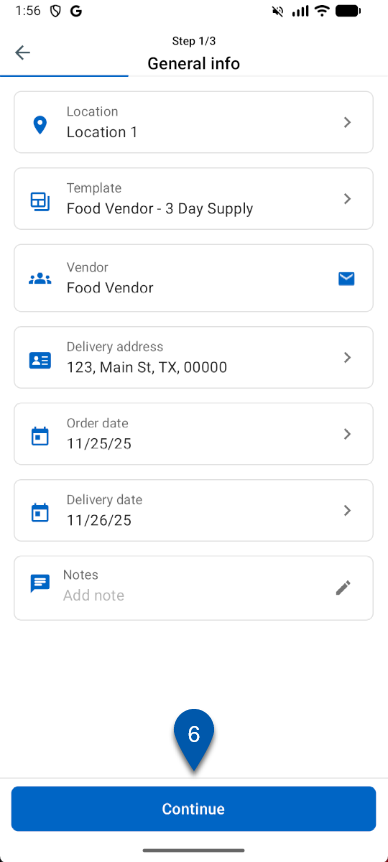
7) Step 2/3 of the purchase order creation will show users the order's item list. To add items to the order, tap the Add item button.
Users will have the following options to add items:
Add all vendor items - Adds all items associated with the selected Vendor to the order.
Add all primary items - Add all items marked as Primary to the order.
Scan barcode - When barcode scanning is enabled, add items by scanning the barcode. Learn more about mobile barcode scanning.
Enter manually - Manually select the individual items to add to the order.
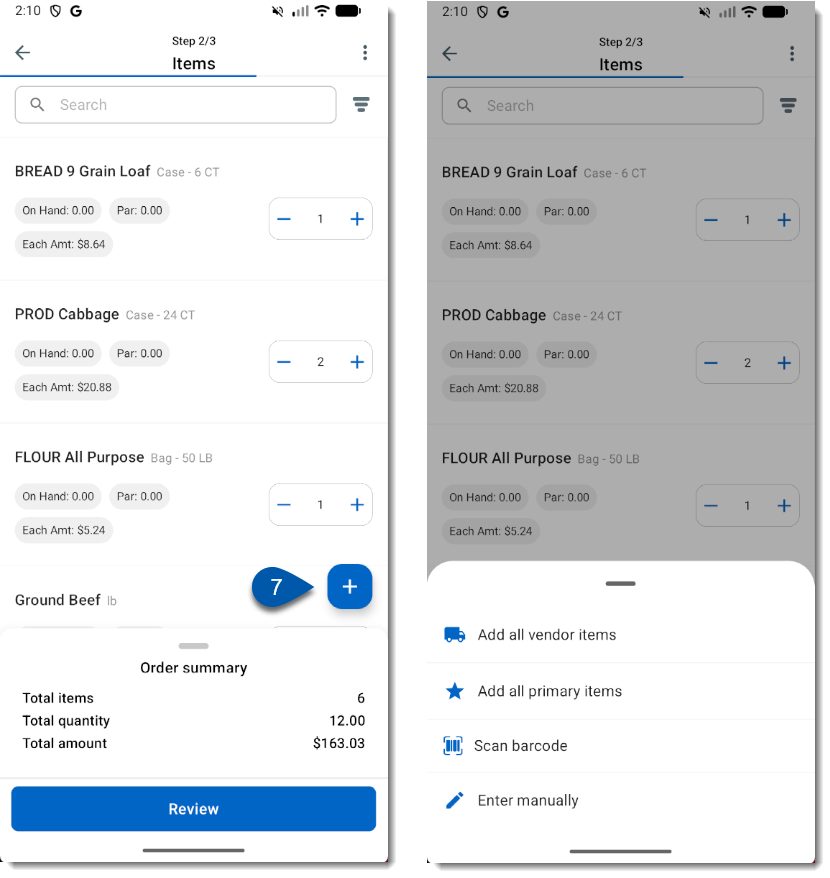
8) When an order template is used, the items from the template will have been autofilled. Users should edit item quantities for the order as needed.
This can be done manually or by Suggested Qty or Par Qty.
To fill the item quantities with a Suggested Quantity or Autofill to Par, tap the menu icon in the top right corner of the screen and make the appropriate selection.
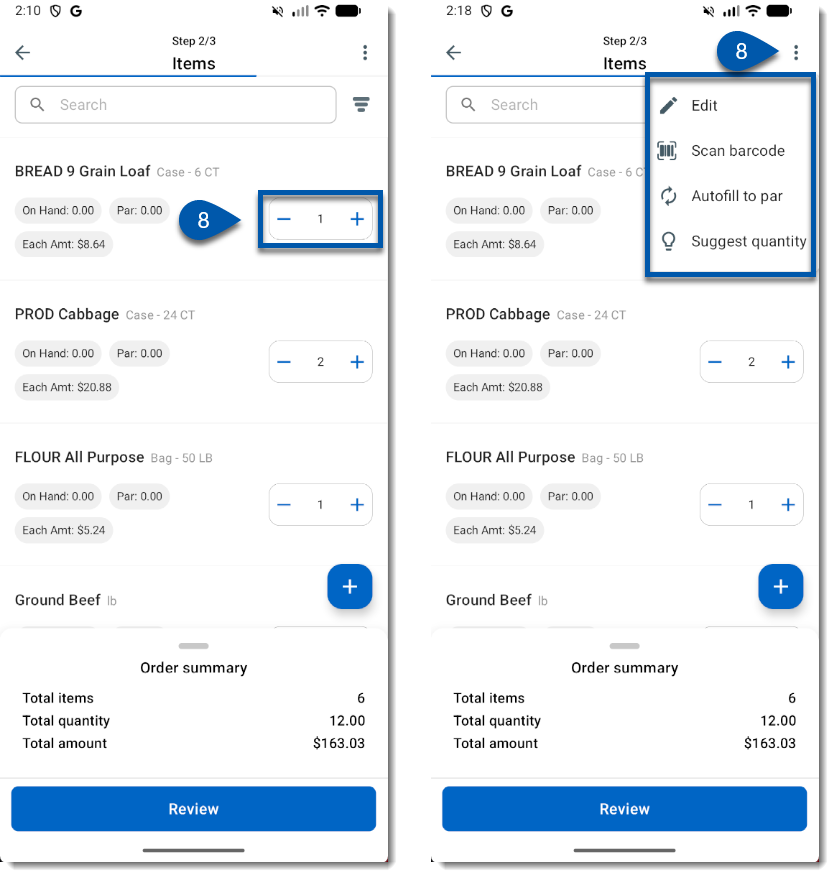
9) Check the Order summary to confirm item totals, quantity breakdowns, and cost breakdowns. Then, tap Review to conduct a final review of the purchase order.

10) Complete a final review of the purchase order. Then, tap Save or Send.
Tapping Save will save the order as In progress. It can continue to be edited, and it will not be sent to the vendor.
Tapping Send will send the order as an email to the vendor email on file.
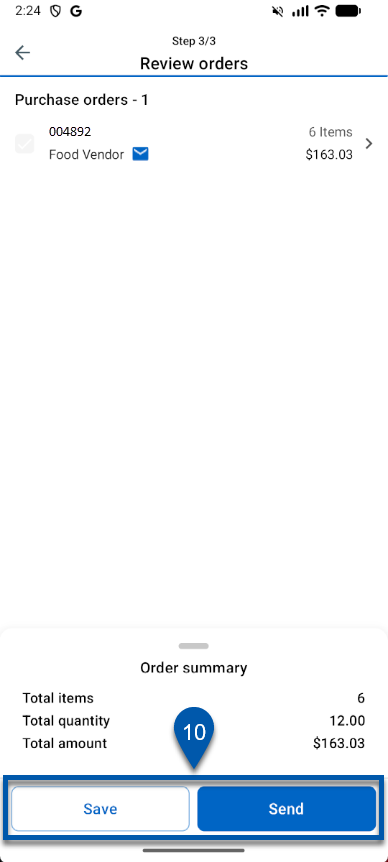
11) Once sent, users will notified that the purchase order was submitted successfully.
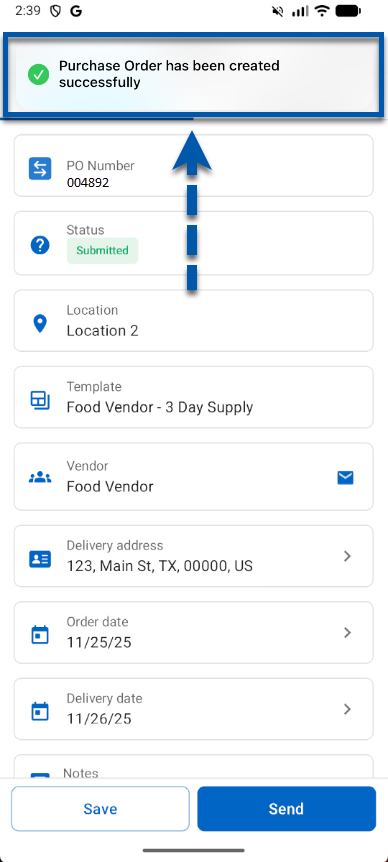
If there are any items with 0 quantities, users will be notified that the items will be removed from the order. If these were left in error, tap Cancel, then open the Items screen to edit the item quantity.
To proceed with the removal of the items, tap Send.

Creating a Multi-Vendor Order
Users can create multi-vendor orders from existing Shopping Lists. Shopping Lists must be created in the web version of R365. Learn more about setting up shopping lists.
To create a multi-vendor order, follow these steps:
Click steps to expand for additional information and images.
1) Navigate to the Orders screen and tap the Create button.
Select More from the bottom tab bar.
Select Orders.
Tap the Create button.

2) Tap the Location field to select the location for the purchase order.

3) Tap the Template field to open the template selector.

5) Select a Shopping list.
Only the shopping lists assigned to the selected location will be available for selection.
Tap the Shopping lists tab.
Select a shopping list.
Tap the Use shopping list button.

6) Confirm the general info and tap Continue to move on to the next step.
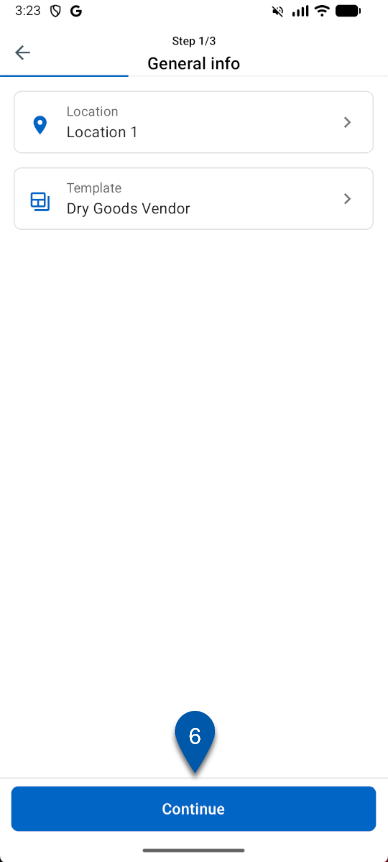
7) Step 2/3 of the multi-vendor purchase order creation will show the order’s item list.

These are the items that have been autofilled from the shopping list. Each item entry shows the following information:
Item Name/Unit of Measure
Vendor
On Hand
Par Amt
Each Amt
In addition to the item quantity, the associated Vendor Item and On Hand quantity can be edited, if needed, by tapping an Item entry. The Purchase item screen also displays:
In Transit Quantity
Last Order Quantity
Last 4 Average Quantity
Suggested Quantity
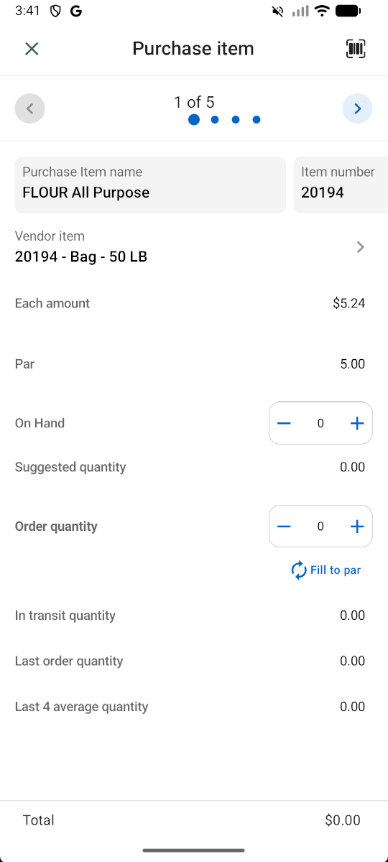
Upon creation, the On Hand field will display the theoretical on hand value based on the item's usage per $1000 of sales. When needed, this field can be edited to include the actual on hand value.
Theoretical On Hand values will appear in grey font. ![]()
Edited On Hand values will appear in black.
8) Edit item quantities for the order as needed.
This can be done manually or using the par qty.
To fill the item quantities with Autofill to par, tap the menu icon in the top right corner of the screen and make the appropriate selection.
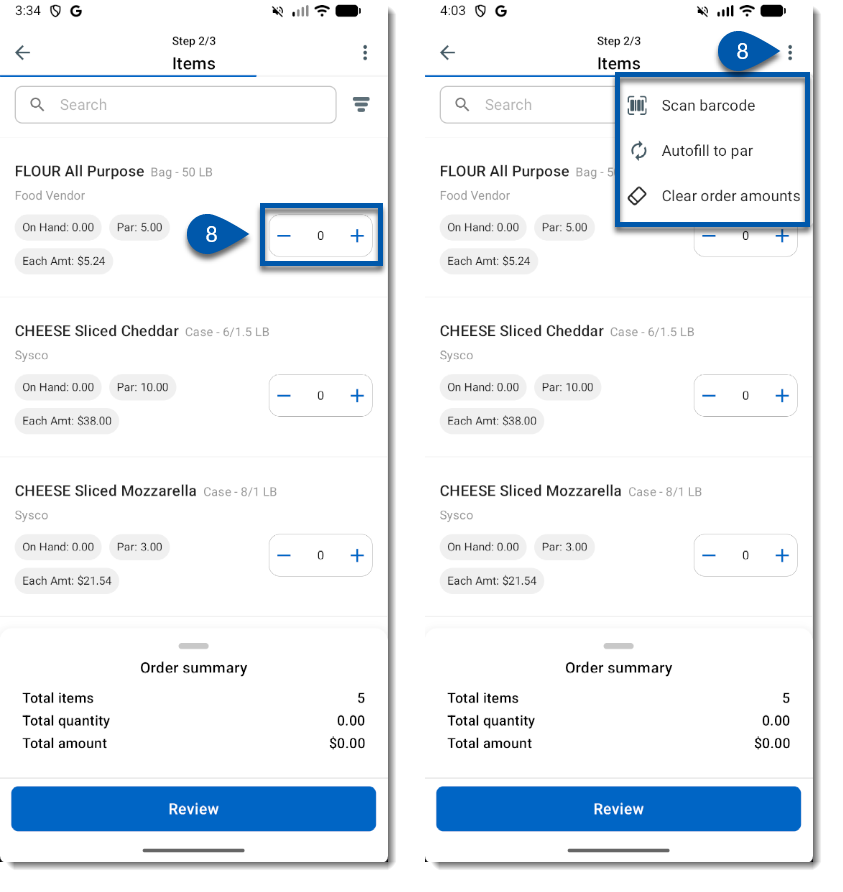
9) Confirm item totals, quantity breakdowns, and cost breakdowns by vendor in the Order Summary. Tap Review to continue.
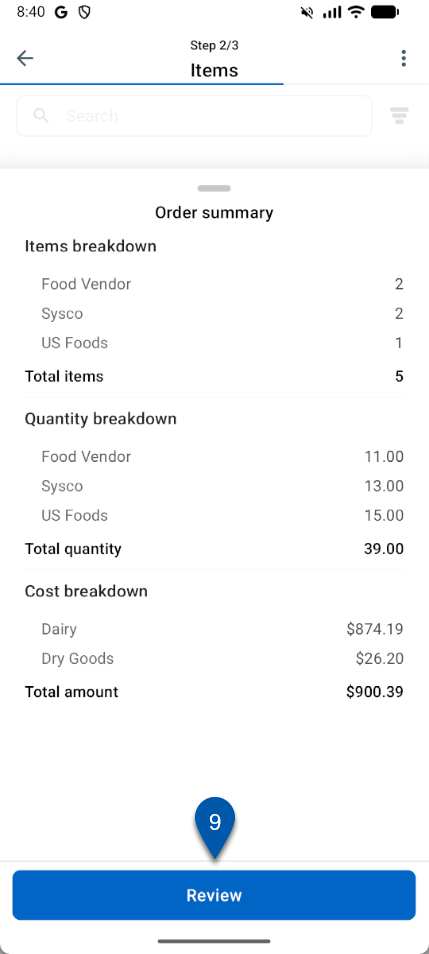
10) Review and select the orders to submit.
Only the orders with a checked box will be submitted.

11) To complete, tap Save As Drafts or Submit.
Tap Save As Drafts to create and save individual purchase orders on the single-vendor order list for each vendor checked. These orders will have a status of In Progress. These can continue to be edited, and will not be sent to the vendor.
Tap Submit to send the selected orders as emails to their respective vendors. These will send to the vendor email that is on file for each vendor.
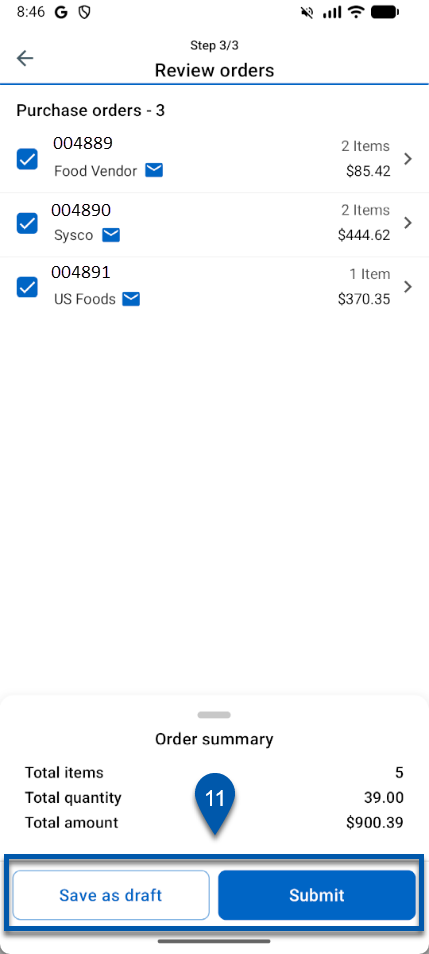
14) Once submitted, users will notified that the purchase order(s) were submitted successfully.
.png)
Each submitted order will then appear as an individual order on the Single-Vendor orders list with the status of Submitted.
If there are any items with 0 quantities, users will be notified that the items will be removed from the order(s). If these were left in error, tap Cancel, then open the Items screen to edit the item quantity.
To proceed with the removal of the items, tap Submit.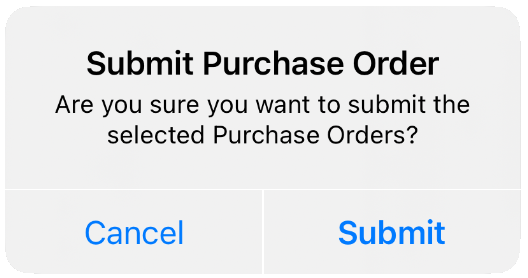
Undo a Purchase Order Submission
Purchase Orders that have been submitted/sent, and not yet invoiced can be edited, if necessary. To edit, users must first 'Undo Send' of the purchase order before resubmitting the order. This can be done by tapping Undo Send on a Submitted order.
Users will be prompted to confirm the action.
The Undo Send button undoes the order send in R365. Users must reach out to the vendor directly in order to change or cancel the order.
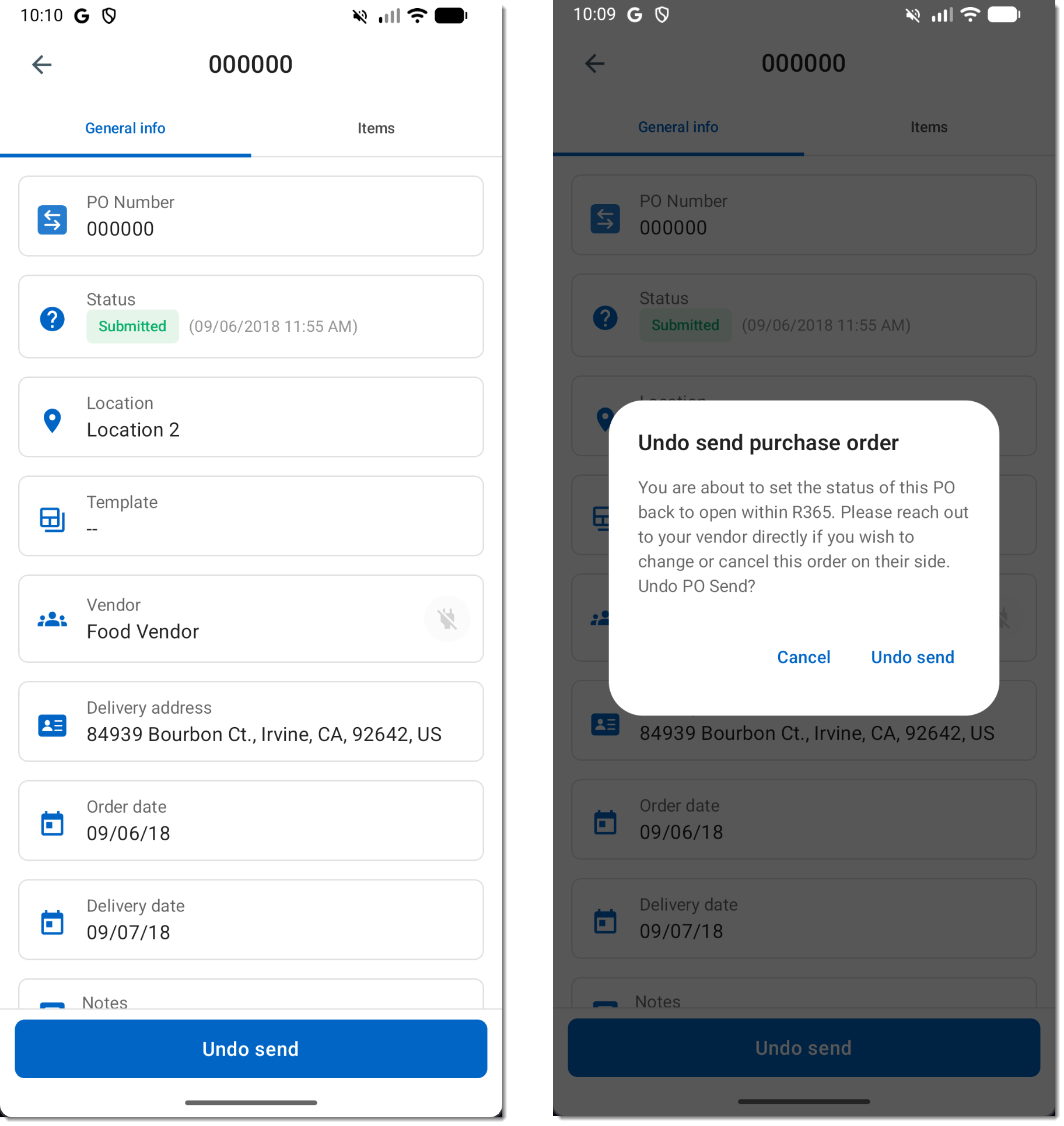
Item Details
Tapping an item from the order list will open a purchase item screen, where users can review and edit the details of the item on the order.
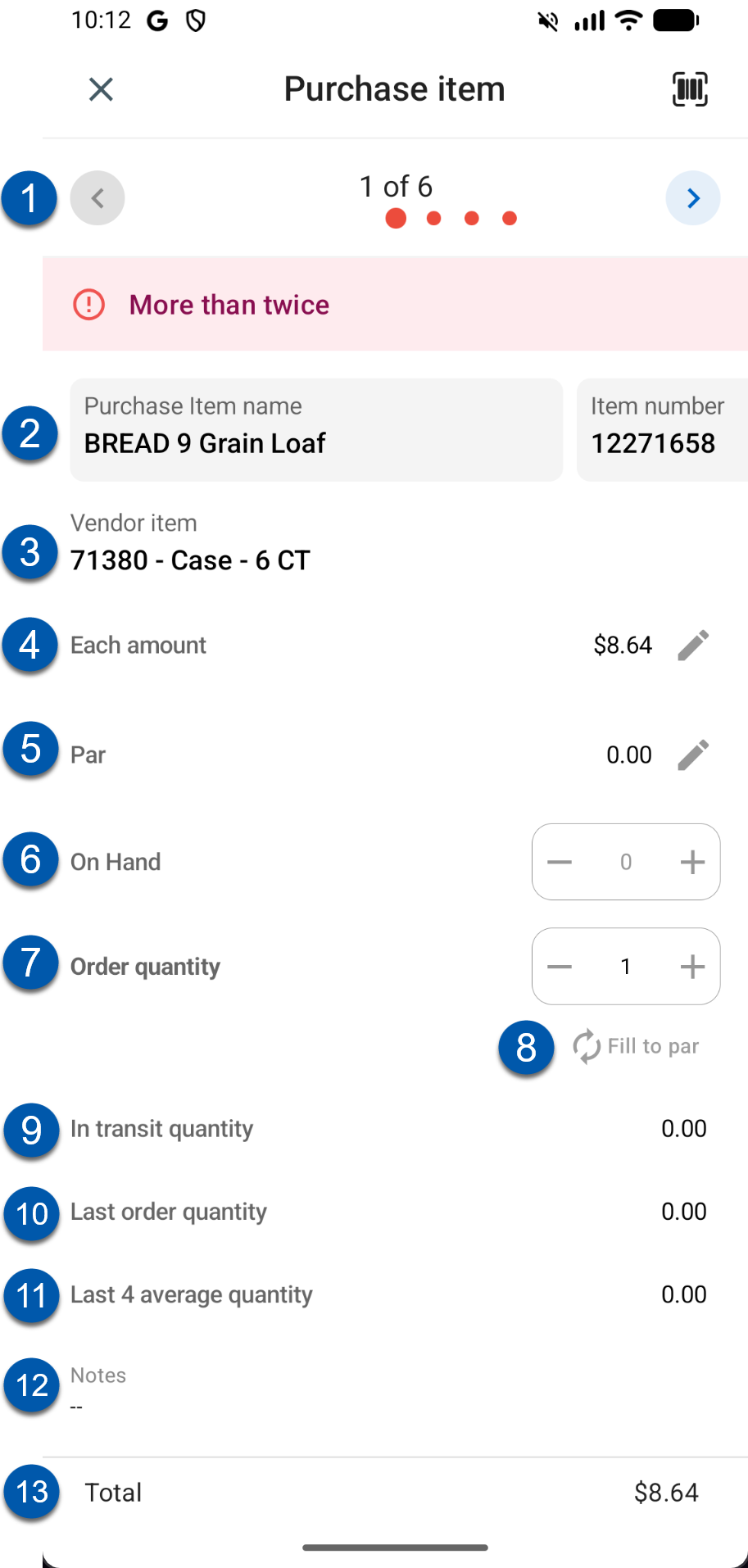
Button/Field | Description | |
|---|---|---|
1 | Next/Back | Forward and back buttons take users to the next/previous purchase item on the order list. |
2 | Item Detail Carousel | The purchased item name and additional details. Swiping on the carousel will show the item number or brand number, if available. |
3 | Vendor Item | The vendor item that the purchased item is linked to in R365. |
4 | Each Amount | The cost per unit. |
5 | Par | The minimum inventory needed on hand.
|
6 | On Hand | Quantity of item on hand. |
7 | Order Quantity | The number of units being ordered. |
8 | Fill to Par | Tapping this will update the order quantity to the amount needed to meet the par quantity. |
9 | In Transit Quantity | The item quantity of any orders that are currently in progress (in transit). This field will have a value when the delivery date on any previous order is after the date of the current order.
|
10 | Last Order Quantity | The average amount ordered on the previous order. |
11 | Last 4 Average Quantity | The average amount of the item ordered on the last 4 orders. |
12 | Notes | Any notes to be added at the item level. |
13 | Total | Total cost of the item being ordered based on the quantity ordered and the each amount. |
Using Suggest Qty
When the Suggest Qty option is used, an addition Suggested Quantity filed will be shown on the purchased item screen that shows the value suggested by R365.
Add Item to Order and Template
When an additional item is added to an order that was created using a template, users with the appropriate permission may elect to only add the item to the order or to add the item to both the order and the template in use.
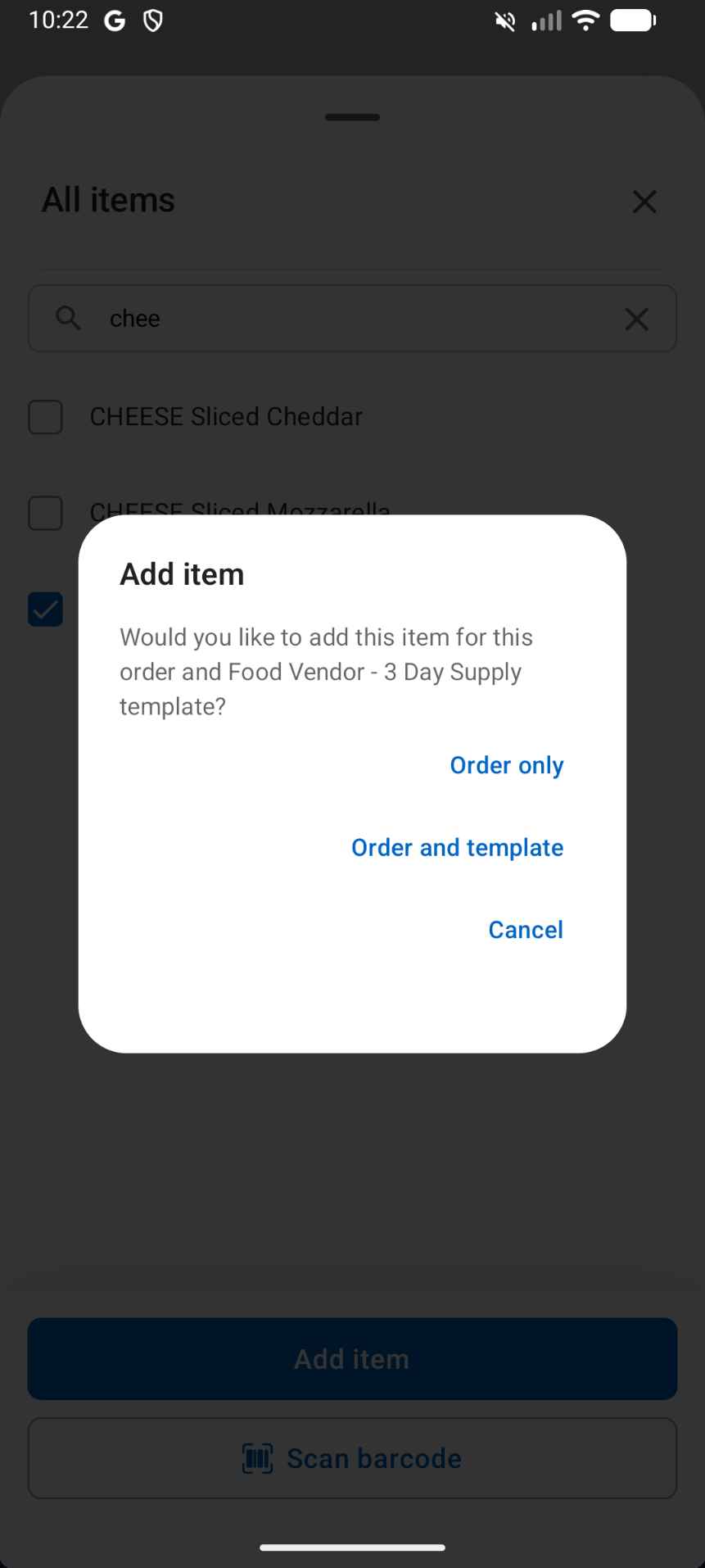
When Order only is tapped, the item will be added to the current order for this one order only. When Order and template is tapped, the item will be added to the current order as well as the selected purchase order template.
The purchase order template will be updated and will now feature the selected item.
To utilize this feature, users must have the Edit Purchase Order Templates permission.
Order Delivery Schedules
When the vendor selected on a mobile purchase order utilizes delivery schedules, the user will be shown a notice for an order due date and time. The order deadline is based on the vendor's delivery due date schedule. When an order date is selected, the order delivery date will update to the next delivery date based on the vendor's delivery schedule.
If the order cutoff date is missed, the delivery date will change. When the delivery date changes, users will be prompted with a notice that the delivery date has changed, and they will be shown the new order date. Users can choose to cancel the order or to submit with a new delivery date.